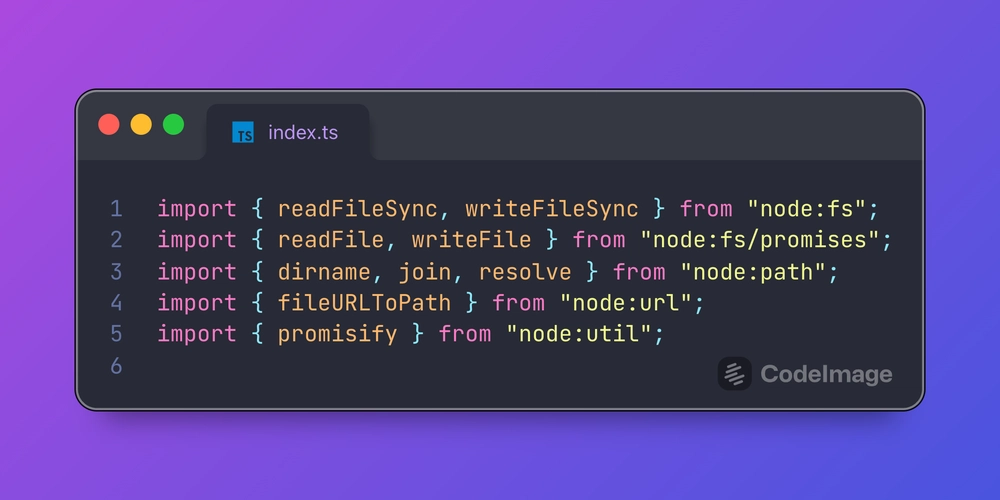Node.js Import Style Guide
When working with built-in Node.js modules, how you import them matters more than you might think. The syntax you choose can affect clarity, performance, compatibility—and even how easily your codebase scales. This guide walks through the different import styles and offers a practical rule-of-thumb approach to picking the best one. For the record, these are not hard rules—but they are sensible defaults that align with modern Node.js practices (especially from v16 onward). TL;DR Use import { method } from 'node:module' Why? It's explicit, tree-shakable, IDE-friendly, and future-ready. import in Node.js: The Big Picture Node.js has come a long way from require(). With ES modules (ESM) support stabilized in modern versions, it's time to level up how we import built-in modules. But here's the catch, you've got options. Let's break them down.

When working with built-in Node.js modules, how you import them matters more than you might think. The syntax you choose can affect clarity, performance, compatibility—and even how easily your codebase scales.
This guide walks through the different import styles and offers a practical rule-of-thumb approach to picking the best one.
For the record, these are not hard rules—but they are sensible defaults that align with modern Node.js practices (especially from v16 onward).
TL;DR Use import { method } from 'node:module' Why? It's explicit, tree-shakable, IDE-friendly, and future-ready.
import in Node.js: The Big Picture
Node.js has come a long way from require(). With ES modules (ESM) support stabilized in modern versions, it's time to level up how we import built-in modules.
But here's the catch, you've got options. Let's break them down.













































































































































































![[The AI Show Episode 144]: ChatGPT’s New Memory, Shopify CEO’s Leaked “AI First” Memo, Google Cloud Next Releases, o3 and o4-mini Coming Soon & Llama 4’s Rocky Launch](https://www.marketingaiinstitute.com/hubfs/ep%20144%20cover.png)



















































































































































































![Rogue Company Elite tier list of best characters [April 2025]](https://media.pocketgamer.com/artwork/na-33136-1657102075/rogue-company-ios-android-tier-cover.jpg?#)





























































































.webp?#)































































































![Here’s the first live demo of Android XR on Google’s prototype smart glasses [Video]](https://i0.wp.com/9to5google.com/wp-content/uploads/sites/4/2025/04/google-android-xr-ted-glasses-demo-3.png?resize=1200%2C628&quality=82&strip=all&ssl=1)













![New Beats USB-C Charging Cables Now Available on Amazon [Video]](https://www.iclarified.com/images/news/97060/97060/97060-640.jpg)

![Apple M4 13-inch iPad Pro On Sale for $200 Off [Deal]](https://www.iclarified.com/images/news/97056/97056/97056-640.jpg)

































































































































